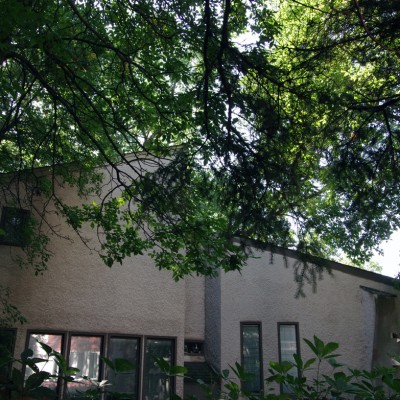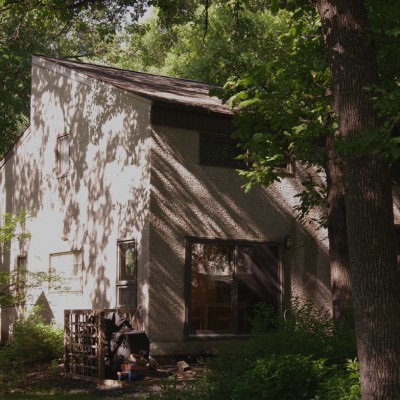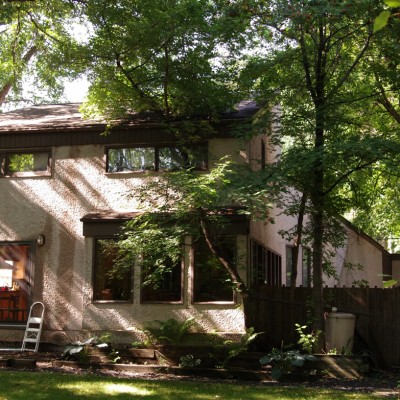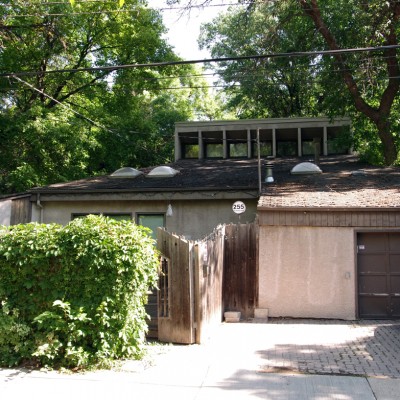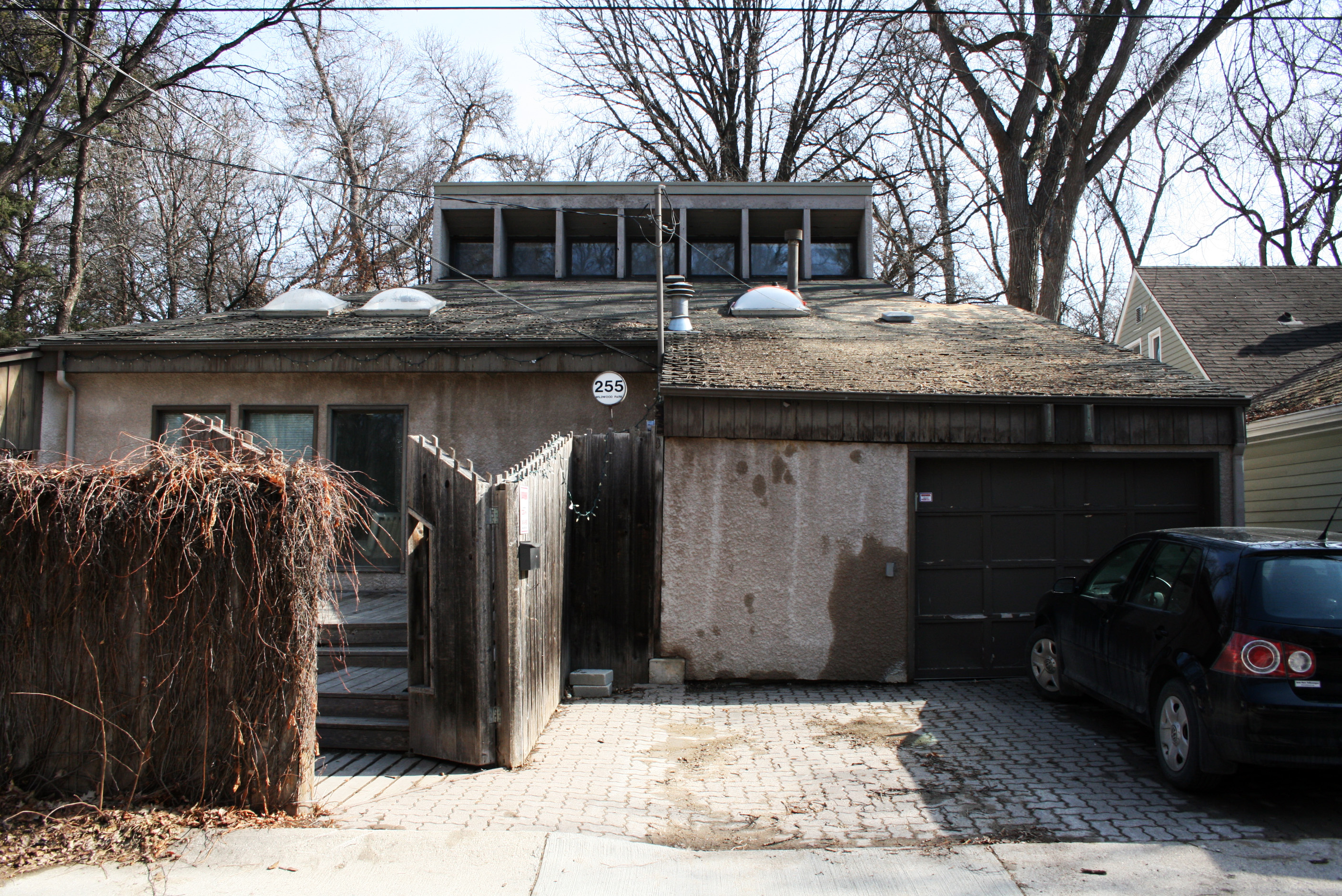Buildings
255 Wildwood Park J
| Formerly: | Koerte Residence |
|---|---|
| Address: | 255 Wildwood Park J |
| Original Use: | Residential |
| Constructed: | 1967 |
| Architects: | Arnold Koerte |
More Information
The first home on this site was built in 1947. The present building was constructed in 1967. This house was given an Honorable Mention Award by the Canadian Housing Design Council in 1969, noting Koerte's success in converting a small post-war bungalow into "a beautiful ultra modern house." This renovation was deemed to be an inspiration for numerous other home-owners in the Wildwood community.
Wildwood is a neighbourhood that resembles few others on earth. Tucked onto a peninsular point of land hugged on three sides by the Red River, this residential district stands apart from the rest of the city in a number of ways. Among the most prominent is the uncommon arrangement of its roadways. Rather than fronting onto streets, the homes in the area (which are set on ten bays) face park-like spaces traversed by sidewalks. Vehicular access is gained via rear alleyways. The scheme, somewhat utopian in ambition, is the remarkable consequence of a twentieth century inclination toward blending home and nature. This was a trend that began to deeply affect suburban building in the nineteenth century. The specific model for Wildwood was Radburn, New Jersey, an area developed according to similar principles in the late 1920s and 1930s. Of the Radburn model period accounts stated that this orientation and plan “represents the first scientific effort that has ever been made to establish a community designed exclusively to minimize the danger of automobile accidents. Yet there were other things to consider too …. It was the desire of the builders to create not only a [safe] community” but one “of beauty in appearance and the utmost of modern efficiency.” (The American Architect, January 1930). The connection between the Radburn and Wildwood two arose from somewhat circumstantial events. Hubert J. Bird, of the Western Canadian development and construction firm Bird Construction, is reported to have flown over Radburn while visiting New York, thereby gaining the inspiration for the area he was erecting in Winnipeg. Aiding Bird in the creation of this new district was the passage of the federal National Housing Act, passed to speed the construction of homes in a booming post-war milieu. To build Wildwood, in 1945 Bird purchased 74.7 acres of land from the Rural Municipality of Fort Garry (at a reputed cost of $15,000). To design the area he hired the local and pioneering local architectural firm Green Blankstein and Russell. Federal housing authorities said of the plans created: “The result should be extremely interesting, attractive and utilitarian,” while recommending the incorporation of the bays found at present, versus the initially suggested hammerhead cul-de-sac lanes. During the building process Bird was to spearhead several new construction methods, including elements modelled on assembly-line techniques; accounts indicate that the adoption of pre-fabrication practices lead to the assembly of three houses being put together per day. At the same time, effort was made to conserve area forests. Stevenson Real Estate was the firm which first marketed homes in the neighbourhood, which sold quickly. A number of the area’s homes were built and inhabited by architects and architecture professors, many in a modernist idiom which had only just started gaining traction in Canada during the early post-war years.
Prior to this wave of 1940s construction, Wildwood was home to the Trew family, who maintained a residence as of 1907 near the intersection of Oakenwald Avenue and North Drive, adjacent to the Red River. Plans for suburban development began during this era, with a gridded street plan put forward in 1912, initiated by Colonel R. M. Thomson. An important part in the area’s history was played by St. John’s-Ravenscourt School, which was moved to this section of the city by Colonel Thomson’s nephew, Norman Young, one-time Ravenscourt headmaster in 1934.
Design Characteristics
| Windows: | The front of the house has four areas of light, two medium and two large in size. The side of the house has varying small areas of glass block which allow for natural light from multiple sides of the house. The varying slopes of the roof allow for multiple clerestory windows throughout the house and three bubble skylights. |
|---|---|
| Doors: | There is no main entryway visible. The back of the house has a single door entry leading onto a porch. This entry has peripheral light. |
| Roof: | The house has varying sloped roofs which possess a number of orientations and slopes. |
| Materials: | The facade of the house is clad in various materials, stucco, vertical wood siding and glass block. |
| Size: | Two storey 2,410 square feet |
| Suburb: | Wildwood |
| Garage: | Single detached. |
Sources
- "Renovation of a Small House." Canadian Architect 14 4 (April 1969): 7-8.
